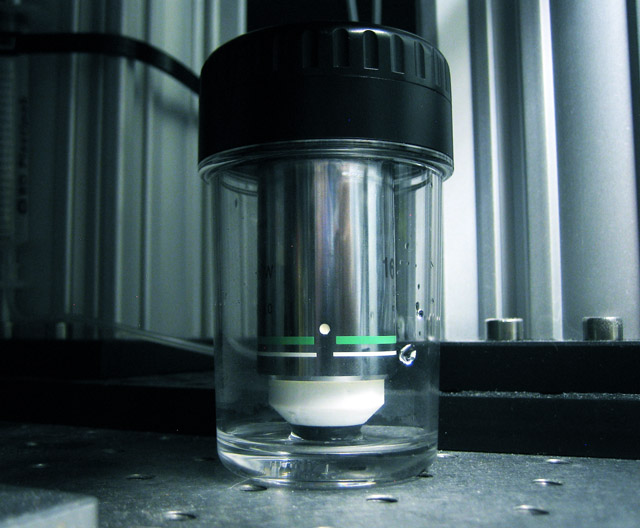Cleaning objectives and other optics
Microscope objectives, in particular, the water-dipping variety so common in physiology and imaging labs, get dirty. Salts build up on them, traces of drugs stick to them, and biological membranes accumulate. It’s best to clean them regularly to preserve their optical properties.
In ascending order of desperation, here are the steps to take to clean objectives. Stop ascending the list once you get the objective clean enough.
1) Don’t let them get dirty.
2) Use compressed air.
3) Use water.
4) Use water + lens paper.
5) Carefully use chemicals like ethyl alcohol or isopropyl alcohol.
Never use acetone or other strong solvents. They’ll ruin the coatings.
Never use Kimwipes. They can sometimes have small particulate matter that will scratch optics.
Never rub dry.
In addition to regular cleaning, careful storage can help as well. Objectives typically come in plastic cylinders that can serve as excellent storage. Fill the bottom of the container with a bit of clean water, just enough to cover the tip of the objective. This way, any salt residue or other biological traces will be leached off of the objective and into the bath. It’s no substitute for cleaning of course, but it beats sitting out in the open air letting all of the salt crystalize.
Edmund Optics has a tutorial on cleaning optics that is worth checking out.
Coherent’s tutorial on cleaning optics covers the Drop and Drag method, as well as the Hemostats and Lens Tissue method.
